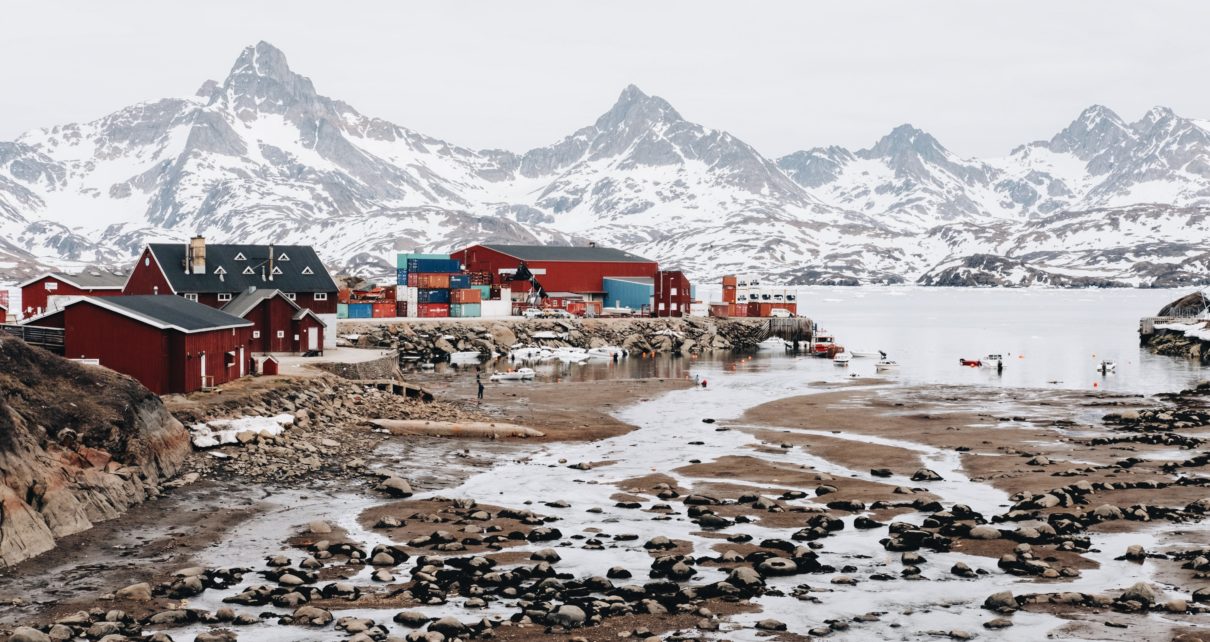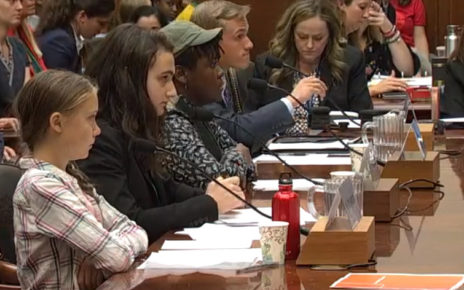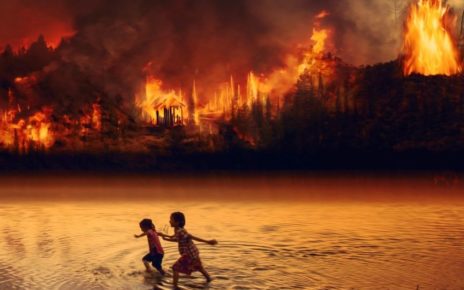The August 2019 headline that Donald Trump wants to buy Greenland shocked many of both country’s people before being eclipsed by the next outrage and eventually, the impeachment saga. Both impeachment and the Greenland story are indicative of foreign policy designed to make headlines and ultimately benefit Trump himself and the special interest elites staffing his administration. What should be truly shocking is how virtually none of the media coverage around this issue mentioned the climate crisis.
At first, America did not know whether to take the President’s scheming seriously or if he was trolling. Denmark, the country that owns Greenland, called the proposal “absurd,” which prompted Trump to call off a visit to Denmark. Additionally, the idea of buying Greenland reportedly came from Sen. Tom Cotton of Arkansas. The fact that this proposal wasn’t originally Trump’s idea, and Trump called off a diplomatic visit because Denmark wouldn’t even consider the deal, suggests that the proposal was serious all along.
All this begs the question, why Greenland and why now? The answer, in short; climate change. Although Greenland is the world’s largest island, three-quarters of it has been permanently covered by ice for thousands of years. Recently, however, it has been melting at astonishing rates. In June, 40% of the Ice sheet was melting at once, and it lost over two billion tons of ice in just one week. Warmer temperatures in the ocean and the air have led to such rapid melting that it seems like there are new, more startling reports every week.
Although President Trump has called climate change a hoax, he cannot deny the rate at which Greenland is melting. Instead of taking responsibility for the US role in causing climate change, Trump sees an opportunity to profit from its effects.
From the perspective of a profit-driven businessman whose name is already plastered on real estate across the globe, Greenland appears an attractive investment. With the island’s ice sheet rapidly shrinking, Greenland may finally live up to its name, at least in the short-term. However, as any of Trump’s past business failures will tell you, the man does not have an eye for stable, long-term investments. On August 1st, 2019, Greenland broke its own record by losing 12.5 billion tons of ice in just one day. For all the climate change “skeptics” out there, this translates to 12.5 billion tons of water being poured into the ocean. As studies indicate, global sea levels rise as a result of this mass loss of glacier.
Due to the additional water from these melted glaciers, as well as water’s tendency to expand with heat, sea levels have risen approximately 93.8 millimeters since 1993, a figure which is currently rising exponentially. If that doesn’t seem like a lot right now, all you have to do is look at the effect this has already had on low-lying, coastal locations. Bangladesh, for example, is often referred to as the “ground zero” for climate change as about a quarter of the nation is positioned less than seven feet above sea level. In the last decade alone, nearly 700,000 Bangladeshis were displaced due to the various effects of climate change. Their homes, farms, and ecosystems have been flooded with seawater. It is predicted that approximately 17% of the nation’s land will be underwater by the year 2050, resulting in the displacement of 20 million Bangladeshi citizens.
So, while Bangladesh is submerged in water, Greenland becomes a pretty piece of real estate, an ideal place for the president to build more golf courses or fracking companies to drill into the earth. But the fact of the matter is that climate change negatively affects the whole planet and any isolated incidents of seemingly positive effects are deceitful, and this deceit is what the Trump administration and the fossil-fuel companies are basing their whole narrative on. I could go on and on about the irony of the Conservative Party not being interested in conservation (at least not the kind that really matters), but what is more telling is the incessant focus on exchanging science for commerce, trading the presentation of facts for the presentation of business pitches.
And when running the country no longer looks like a lucrative investment, Trump loses interest (no pun intended), demonstrated clearly by the cancellation of his trip to Denmark after prime minister Mette Frederiksen declined his offer to buy Greenland. Micahel Aastrup Jensen, a member of the Danish parliament and the center-right Venstre Party, said the cancellation was “an insult from a close friend and ally,” and, as mentioned earlier, Frederiksen herself said the idea that she would sell Greenland to the U.S. was “absurd.” Former Danish Prime Minister Lars Løkke Rasmussen tweeted that “it must be an April Fool’s Day joke.” Apparently, no one in the Danish government had taken the proposal seriously, the consensus is that it was another attempt at unfunny, borderline offensive American humor.
Unfortunately, it’s difficult for most of us to find humor when the planet is melting before our very eyes. Research has shown that thawing glaciers emit methane, a greenhouse gas that further warms the planet. This natural gas is valuable in today’s economy and is likely one of the reasons for Trump’s imperceptive proposal. However, the emission of more greenhouse gas from these glaciers is a major contributor to global warming, which in turn melts more glaciers and releases more natural gas. Multiple sites in both Greenland and Iceland have been producing methane according to two separate studies published last November, and a new site in Greenland was identified earlier this year. One of these sites, the Sólheimajökull Glacier, releases about 40 tons of methane every day. Sure, it has some monetary value, but it would be worth a lot more to not exacerbate climate change.
All of this ties in, of course, to the grand old Western tradition of colonialism, a comparison that many Danish politicians are making. Jensen himself said “the whole idea that another country could buy Greenland, like it should be a colony, is so strange to us.” Martin Lidegaard, the chairman of the Danish parliament’s foreign policy committee and a former foreign minister said Trump’s proposal showed interest not only in buying the country “but also its people,” asserting that the plan would compromise the rights of Greenlandic citizens. And the citizens of Greenland agree, affirming that they do not want to become U.S. citizens.
Yet there is a deep contradiction in these Danish politicians’ protests. Denmark itself colonized Greenland, whose inhabitants today are overwhelmingly (90%) Inuit, the Indigenous peoples who have inhabited the Arctic region across Canada to Alaska for millennia. The original Danish colonization period lasted over 200 years, during which time many of the typical violence of colonization were enacted upon the Inuit despite attempts to whitewash Danish colonization as more “benign.” Indigenous sovereignty was denied and uprooted, smallpox epidemics imported by the invaders decimated the population, and a system of cultural and racial supremacism was established.
Even as Greenland has been incrementally winning greater independence since 1953, this cultural colonization continues to cause much suffering today and has been linked to high rates of depression, alcoholism, and suicide among the Inuit as in many other Indigenous communities. Yet few Americans know the United States already has a direct hand in this violence, and has been an accomplice of the Danish Occupation for more than half a century. Ever since World War II, Denmark has signed away to the U.S. the right to build military bases on Greenland, and most infamously removed an entire Inuit community from their home in order for the U.S. to establish its northernmost radar base at Thule. Further violence was visited upon the local Inuit people when a B-52 loaded with nuclear bombs crashed at Thule in 1968 and exposed over 1,700 people to potentially lethal radiation.
Trump’s threat of “purchasing” Greenland from Denmark thus invokes not only the consolidation of an ongoing American military occupation of the island. It also invokes the American “purchase” of another Inuit homeland – Alaska – from Russia more than a century ago. The rapidly melting ice due to global warming is already creating serious and unprecedented challenges for Inuit peoples across the Arctic. This is not only due to ecosystem disruption undermining traditional subsistence practices like hunting seals and whales, but also because Canadian and American corporate interests have been greedily eyeing oil & gas deposits across the Arctic for some time now. In conclusion, Trump’s maneuvering to purchase Greenland is not only a serious provocation; it also escalates both of these trends.
Citations:
https://www.businessinsider.com/donald-trump-businesses-failures-successes-2016-10
https://climate.nasa.gov/evidence/
http://www.internal-displacement.org/countries/bangladesh
https://www.nrdc.org/onearth/bangladesh-country-underwater-culture-move
https://www.scientificamerican.com/article/greenland-has-yet-another-methane-leak/
https://sermitsiaq.ag/kimusa-ikke-blevet-fjenden
https://time.com/5622374/donald-trump-climate-change-hoax-event/
https://phys.org/news/2015-10-climate-inuit-culture-thin-ice.html
On Melting Ice: Inuit Struggle Against Oil and Gas in the Arctic
Additional Studies:
https://www.eea.europa.eu/data-and-maps/indicators/greenland-ice-sheet-3/assessment
https://nsidc.org/greenland-today/
https://umu.diva-portal.org/smash/get/diva2:1105939/FULLTEXT01.pdf




